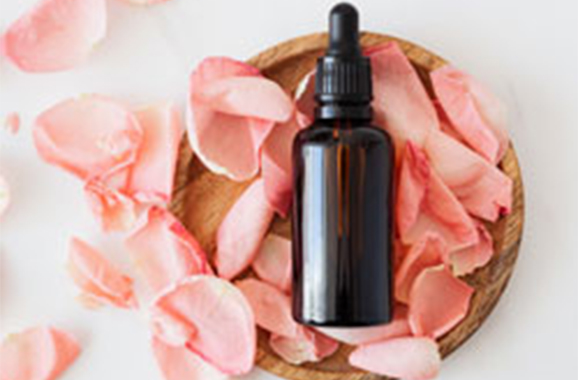Sorbitan Monolaurate
CAS No.: 1338-39-2
Synthesized from lauric acid
Has an HLB value of 8.6, slightly soluble in isopropanol, tetrachloroethylene, xylene, cottonseed oil, mineral oil, etc. Insoluble in water
Sorbitan esters are nonionic lipophilic surfactants that are commonly used as water-in-oil (W/O) emulsifiers and stabilizers. Sorbitan fatty acid esters are produced by esterification of dehydrated sorbitol (sorbitan) with a variety of fatty acids. Sorbitol is a sugar alcohol that can be obtained by the reduction of glucose or derived from corn, potatoes, etc. The fatty acids commonly used to synthesize sorbitan esters include lauric acid, palmitic acid, stearic acid, and oleic acid.
Sorbitan esters used as non ionic surfactants are effective for various functions. Our range of surfactants is used in a variety of settings, for example, as an emulsifier in food, a stabilizer in a cosmetic cream formulation, or a cosolvent and antirust agent for petroleum and oil. These surfactants are sourced from vegetables and vegan friendly. They are safe and nontoxic as food additives when used according to regulations.
Our range of sorbitan esters has a hydrophilic-lipophilic balance (HLB) between 1.6 - 8.6, which make them dissolvable in polar organic solvents and oils. When used in combination with varying proportions of ethoxylated sorbitan esters (polysorbate) that have an HLB range between 10.0 – 16.7, it creates more versatile surfactants; which can produce W/O or oil-in-water (O/W) emulsions with varying levels of consistencies, expanding the possible applications of these surfactants.
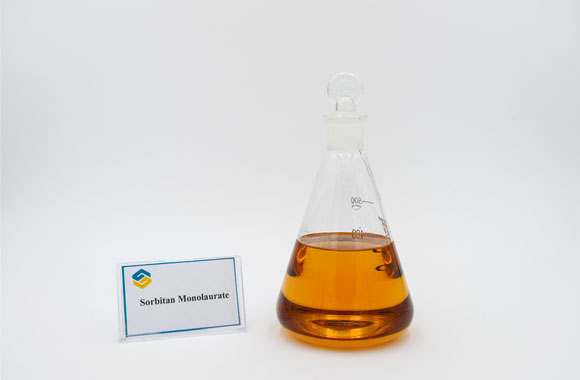
CAS No.: 1338-39-2
Synthesized from lauric acid
Has an HLB value of 8.6, slightly soluble in isopropanol, tetrachloroethylene, xylene, cottonseed oil, mineral oil, etc. Insoluble in water
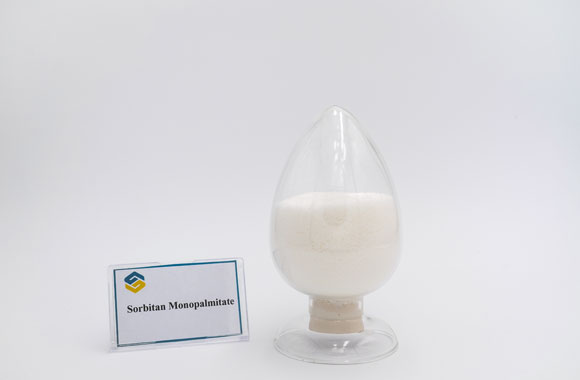
CAS No.: 26266-57-9
Synthesized from palmitic acid
Has an HLB value of 6.7, soluble in ethanol, ethyl acetate toluene etc. Can disperse in hot water.
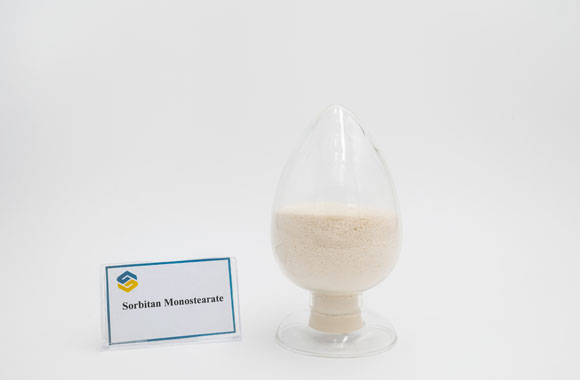
CAS No.: 1338-41-6
Synthesized from stearic acid
Has an HLB value of 4.7, soluble in ethanol, toluene. Can be dispersed in warm water.
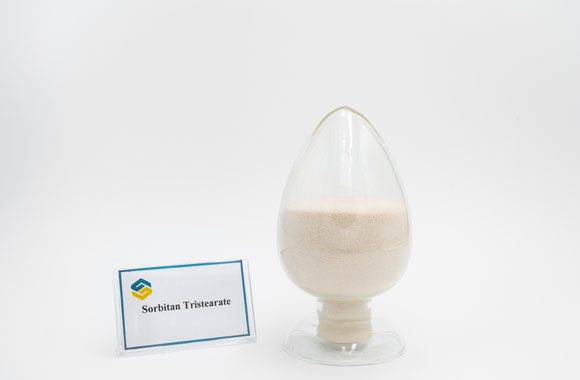
CAS No.: 26658-19-5
Synthesized from stearic acid
Has an HLB value of 2.1, can be dispersed in petroleum ether, mineral oil, vegetable oil. Difficult to dissolve in toluene, ether and ethyl acetate.
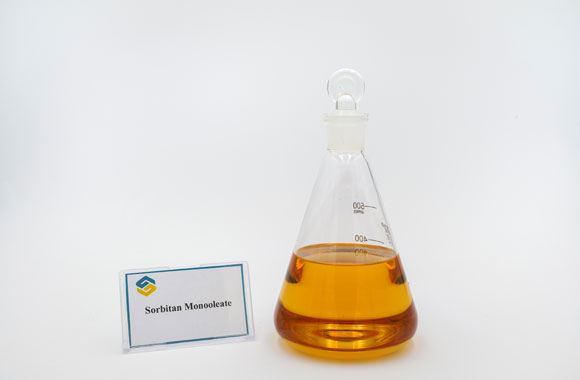
CAS No.: 1338-43-8
Synthesized from oleic acid
Has an HLB value of 4.3, soluble in ethanol, ethyl acetate, petroleum ether, etc. Can disperse in hot water.
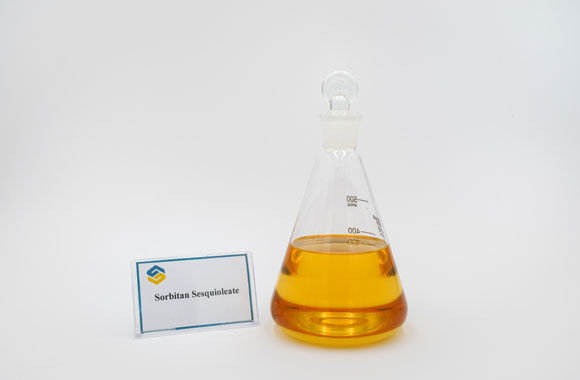
CAS No.: 8007-43-0
Synthesized from oleic acid
Has an HLB value of 3.7, soluble in ethanol, ethyl acetate, petroleum ether etc. Insoluble in water.
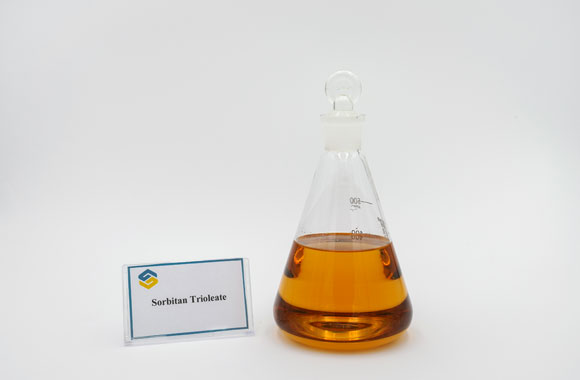
CAS No.: 26266-58-0
Synthesized from oleic acid
Has an HLB value of 1.8, soluble in mineral oil and vegetable oil. Hardly soluble in ethyl acetate and petroleum ether.
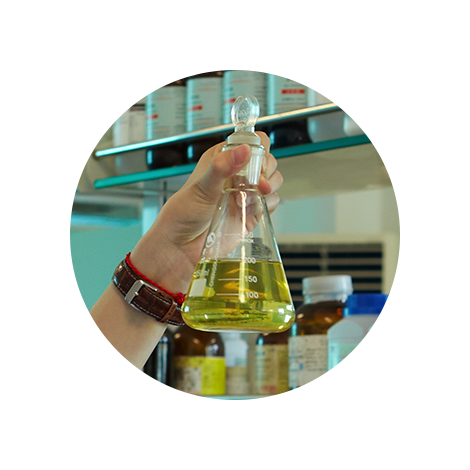
Not only serve as emulsifiers, but also as stabilizers, wetting agents, dispersants, lubricants, thickeners etc.
Our sorbitan ester products can be used in food, feed, pharmaceutical, industrial and cosmetic.
We have 7 kinds of sorbitan esters, that differ by the fatty acids used to esterify sorbitans. Each surfactant has a different hlb value, suitable for use in different product formulations.
All of our sorbitan esters are made of ingredients sourced and derived from plants.
Products and packaging can be customized according to clients' needs
Compare to ionic surfactants, non-ionic surfactants are less sensitive to acidity or alkalinity.
In water-in-oil emulsion, the hydrophilic parts of emulsifiers surround the water droplets and expose their lipophilic portions to the oil phase. This allows water droplets to suspend in oil environment.
Sorbitan ester is composed of sorbitol-derived hexitol anhydrides aka sorbitans and various fatty acids (lauric acid, palmitic acid, stearic acid, and oleic acid, etc.). Polyoxyethylene sorbitan fatty acid ester is attached to sorbitans through esterification reactions.
Sorbitol is a sugar alcohol (crystalline hexahydric alcohol) that can be sourced from plants, such as corns and potatoes. When sorbitol undergoes a dehydration process, where one water molecule is removed, it creates an anhydride called sorbitan.
HLB value is the abbreviation for hydrophilic-lipophilic balance, it is the ratio between the hydrophilic portions and lipophilic portion of a surfactant. It is represented by a number between 1 and 20. An HLB value less than 6 indicates that the surfactant favors W/O emulsion; an HLB value greater than 8 favors O/W emulsion. HLB values in between 7 and 9 indicate that the surfactants are good wetting agents.
Sorbitan esters are widely used in cosmetics, food, medicines. They are generally considered as non-toxic and non-irritant. They are considered to be safe cosmetic ingredients.2 According to the World Health Organization (WHO), sorbitan esters composed of lauric acid, palmitic acid, oleic acid and stearic acid are safe to consume as food additives.1 The group ADI value of these sorbitan esters is 0-25mg/kg body weight/ day.1 Acute and long-term studies have shown that sorbitan esters are non-toxic via ingestion.2 During digestion, sorbitan esters are hydrolyzed into sorbitan and fatty acid; the fatty acid moiety is absorbed and metabolized, whereas the sorbitan moiety is excreted through urine, feces or respiration.
